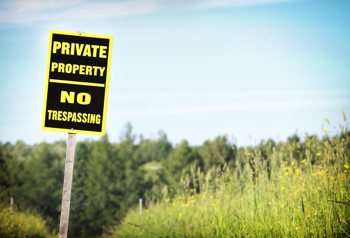Poems by Janine DeBaise
Archives: by Issue | by Author Name

Snowfort Theory
by Janine DeBaise
From Canary Fall 2022
Janine lives in a wooded, swampy area a few miles south of Oneida Lake on land that is the ancestral home of the Haudenosaunee Confederacy. Since childhood, she has spent summer weekends on a rocky peninsula of oak trees in a marsh on the Saint Lawrence River, where she sails with her father.
A new sign tacked to the lone tree said: No Trespassing.
My father and I, in his eighteen-foot sailboat, had just glided closer to the island to read the bold black letters. We were in the Thousand Islands region of the Saint Lawerence River, and we knew this particular island well. We’d come to it many times on a sunny afternoon, the rest of the family in tow, to swim off the rocks and sunbathe on the ledge. But now it would now be off limits.
“New owner,” my father said with a sigh.
I nodded. We knew the pattern.
The first thing someone does after buying an island is to put up No Trespassing signs. That seems to be the crux of private ownership of land: you get the right to keep people off. And then you start building.
A few weeks later, we saw a barge pulled up to the island, filled with cinderblocks and lumber. Each time we sailed past, we could hear the furious activity of hammers, drills, and circular saws. Gradually, the structure took shape. By the end of the summer, the island sported a new cottage, complete with fancy deck, sturdy dock, and Adirondack chairs.
The second summer, we saw people enjoying the new place: kids playing in the water, a woman in a chair reading a book, and a man sunning himself on the dock. But by the third or fourth season, the island looked deserted: the house locked tight, the dock empty. The No Trespassing signs faded and fell away, allowing local people to swim or fish there with impunity. We knew if the building stayed abandoned long enough, it would disappear altogether, knocked down by the ice and wind, and the island would become one of the uninhabited islands where families like us go for a swim in the deep river water.
But then come spring, a new No Trespassing sign will go up, and the whole process will begin again. Each time, the place that gets built is a little bigger, a little more ambitious, until you have these ridiculously huge buildings on tiny rocks, porches hanging right over the edge of the island.
It's a peculiar phenomena. It almost seems that the more money people spend on a summer cottage, the less they use it. My father, who has been coming to this river for over 80 years, says that people have less leisure time than they used to, that people who work high pressure corporate jobs have the money to build big summer places, but no time to use them. Many come only once a year, or they move away and stop coming altogether.
I've got another theory. I call it the snow fort theory.
When I was a kid, I loved building snow forts. After a good storm, we could build pretty impressive structures with tunnels, cave-like rooms, castle turrets edged with sharp icicles, maybe a lookout tower. Playing in the fort meant building it, adding rooms, scooping out tunnels. The fun part was building and creating. We never actually use the fort for anything, just kept making it bigger. With each new snow fall, we got greedier, building the fort bigger and higher, until a thaw would humble us by collapsing the whole thing.
Sometimes I wonder if our culture is based on the snow fort mentality. We keep building bigger houses, buying more stuff, adding on rooms, making new shopping malls – bigger, better shopping malls – taller buildings, higher walls, wider highways. We are intent on always growing. Our economy is based on the idea of constant growth, as if our resources were not finite. It's as if we Americans are stuck forever in childhood, always just building and buying new stuff, without any thaw to bring us back to the bare ground.
Up on the river, the islands are quickly filling with big stone piers, huge boathouse, and mansion-like summer cottages. But when my father and I sail past in the early morning, the only life we see are the pair of loons who swim near the big rocks and the osprey that makes an amazing dive for a fish. The summer mansions, with their turrets and windows and rows of wooden chairs, remain empty.

© Janine DeBaise